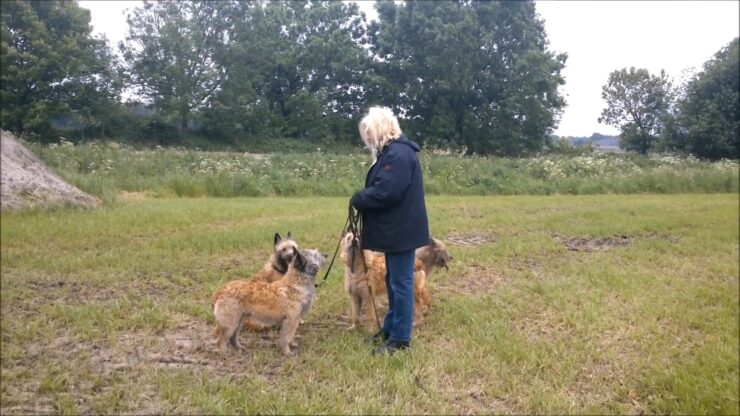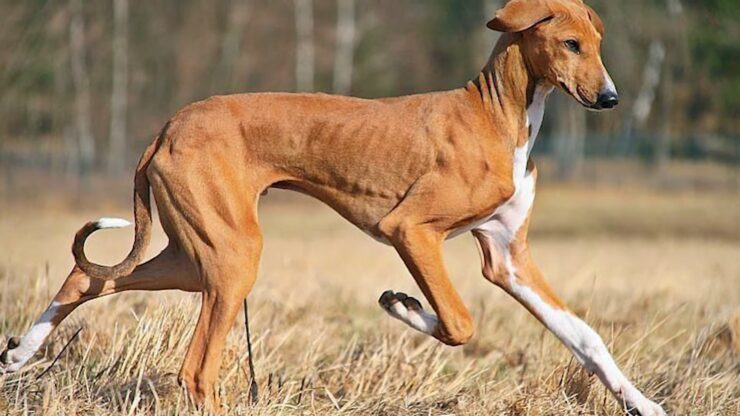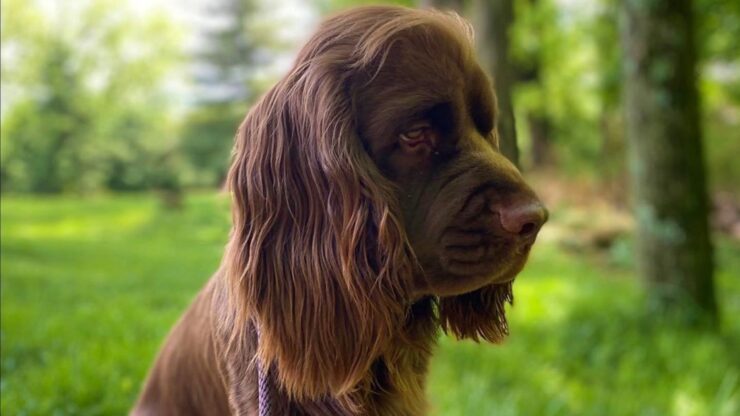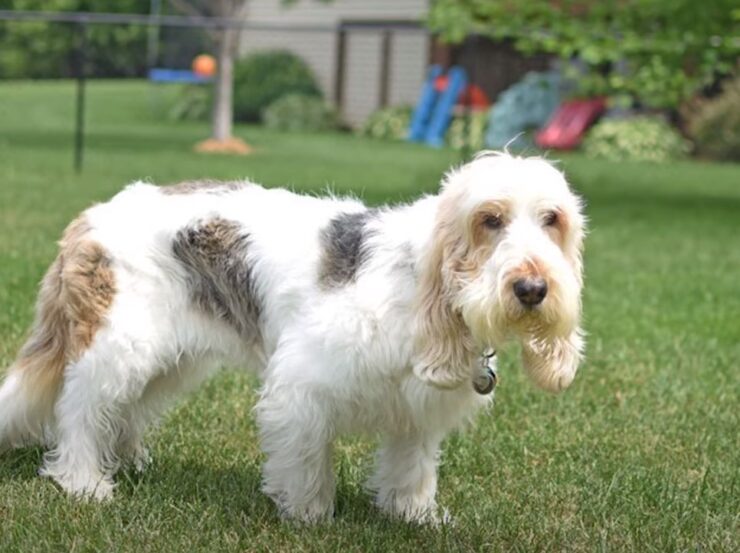Small enough to comfortably nestle in a breakfast bowl, yet large enough to sneak a bite of your morning cereal, dogs present a fascinating conundrum. They exist as a single species, but their diversity outmatches any other terrestrial mammal.
Their weights can span from a meager 4 pounds to an imposing 200, with their heights reaching up to 32 inches at the shoulder.
Dogs are a smorgasbord of colors and patterns and can sport a wide range of coat styles. From stout to slender, long-haired to short-haired, wire-haired to dreadlocked, the world of dogs is a vibrant tapestry of form and function.
Throughout millennia, humans have been honing breeds for specific traits to suit various roles. Dogs have been shaped to hunt, guard or shepherd livestock, exterminate rats, retrieve, carry out rescue missions, pull sleds, guide the visually impaired, compete in races, and provide companionship.
Some breeds, though, have waned in popularity or edged closer to extinction due to their inability to adapt to a domestic lifestyle. They might require an overwhelming amount of daily exercise or their vocalizations might not be appreciated in a suburban setting.
As human interactions with dogs continue to evolve, questions about the future of certain breeds arise. For instance, what becomes of the greyhound with the dwindling dog-racing industry?
The AKC recognizes almost 200 breeds. Here are some of the most uncommon ones, as per AKC’s 2022 registration statistics.
Table of Contents
Toggle15 Uncommon Breeds
| Breed | Weight Range | Unique Features | Historical Purpose | Current Role | Health Concerns |
|---|---|---|---|---|---|
| English Foxhound | 60-75 pounds | Distinctive hound temperament, pack-oriented, gentle with kids | Fox hunting | Rare due to lack of fox hunting | Hip dysplasia, kidney disease |
| Norwegian Lundehund | 20-30 pounds | Agile, 6 toes on each foot, used for puffin hunting | Puffin hunting | Companionship, performance events | Lundehund Syndrome |
| Sloughi | 35-50 pounds | Graceful, noble, used for hunting game in North Africa | Hunting various game in the desert | Primarily companionship | Progressive Retinal Atrophy (PRA) |
| American Foxhound | 60-70 pounds | Gentle, good-natured, social, requires exercise | Fox hunting, companionship | Rare, requires exercise for well-being | Thrombocytopathy (blood disorder) |
| Belgian Laekenois | 44-66 pounds | Working breed, used for guarding livestock and linen | Guarding, messenger dog (WWI, WWII) | Rare, herding competition | Hip dysplasia |
| Azawakh | Males: 45-55 pounds, Females: 33-44 pounds | Lean, agile, loyal, hunting breed in West Africa | Guarding, hunting | Increasing popularity as pets | Bloat, issues related to slim physique |
| Harrier | 45-65 pounds | Resembles “Beagle with a gym membership,” keen sense of smell | Hare hunting, pack-oriented | Relatively rare breed | Hip and elbow dysplasia |
| Sussex Spaniel | 35-45 pounds | Strong, low-built bird dog, calm and clownish behavior | Bird hunting, endurance | Family pet | Heart issues, otitis externa |
| Cesky Terriers | 13-22 pounds | Hypoallergenic, less active and quieter than other terriers | Hunting assistance | Good family pets | Scottie Cramp, cardiac issues |
| Pyrenean Shepherd | 15-30 pounds | Agile, intelligent, versatile, used as a sheepdog | Sheep herding | Family pet, working dog | Hip dysplasia |
| Skye Terrier | 35-45 pounds | Oldest terrier breed, distinctive appearance, courageous | Hunting badgers and otters | Family pet, watchdog | Autoimmune disease, orthopedic problems |
| Finnish Spitz | 20-33 pounds | Originally bred for hunting, active, unique bark | Hunting all types of game | Family pet, hunting companion | Hip dysplasia, patellar luxation |
| Canaan Dogs | 35-55 pounds | Ancient breed, agile, confident, versatile | Feral breed in ancient Canaan | Working roles, family pet | Hip dysplasia, hypothyroidism, epilepsy |
| Dandie Dinmont Terriers | 18-24 pounds | Distinctive topknot of hair, used for hunting badgers | Hunting badgers and otters | Watchdog, family pet | Glaucoma, back issues |
| Grand Basset Griffon Vendeens | 40-44 pounds | Hunting hound with rustic appearance, enthusiastic howl | Hunting in the Vendee region of France | Working dogs | Hip and elbow dysplasia |
English Foxhound
These social butterflies, weighing between 60-75 pounds, possess a distinctive hound temperament. Being pack hounds, they thrive on interaction and companionship, whether with other animals or humans, making them particularly gentle with children.
However, their prevalence as house pets is rare, largely owing to their relentless pursuit instincts, which dominate their behavior. English Foxhounds were originally bred for fox hunting, a pursuit activity wherein a pack of hounds and horse-mounted hunters relentlessly chased a single fox until it was exhausted.
Fox hunting is now banned in the U.K., rendering the primary purpose of this breed irrelevant. This may not be fortuitous for the foxhound, given that their innate tendencies and qualities do not align well with a sedentary domestic lifestyle.
Consequently, their numbers have dwindled significantly, making them the rarest breed according to the American Kennel Club’s 2022 registration statistics.
Norwegian Lundehund
A distinctive feature of the Norwegian Lundehund, which weighs between 20-30 pounds, is its agility. They were bred for puffin hunting on the remote Arctic isles of Norway, a task which necessitated great flexibility and range of motion in their joints, to reach into crevices where puffins nested. An additional evolutionary adaptation is the presence of six toes on each foot.
The Norwegian Lundehund breed teetered on the brink of extinction between the 1940s and 1960s, largely due to the declining relevance of puffin hunting. There are currently around 1,400 of these dogs globally, making them a rare breed.
As puffin hunting is no longer practiced, except in Iceland, the role of this breed has evolved to become primarily companionship and performance events, with their historical hunting traits now lying dormant.
Sloughi
Also known as the “Arabian Greyhound,” the Sloughi breed weighs between 35-50 pounds. These dogs, hailing from North Africa, were historically used for hunting a variety of game, such as hare, fox, jackal, gazelle, and wild pigs, in the desert landscapes. They carry themselves with grace and elegance, a testament to their noble lineage.
Despite their hunting origins, Sloughis are known for their deep devotion to their owners, often forming a strong bond. However, they can be somewhat reserved or aloof around strangers.
The decline of traditional hunting practices in their native region has seen the Sloughi’s role transition to primary companionship, albeit their numbers are relatively low.
American Foxhound
The American Foxhound, cousin to the English Foxhound, is a good-natured breed, weighing between 60-70 pounds. They are known for their gentle demeanor, for getting along well with kids, other dogs, and even cats. They are particularly social dogs, preferring the company of others to solitude.
However, as a breed, they require considerable exercise to stay in good spirits. Lack of sufficient activity can lead to bouts of depression and potentially destructive behavior.
Another notable trait is their loud baying, which can be a nuisance in urban or suburban environments, causing potential friction with neighbors. Despite these challenges, American Foxhounds remain a beloved breed in the U.S., albeit relatively rare compared to more popular breeds.
Belgian Laekenois
Weighing between 44-66 pounds, the Belgian Laekenois is a working breed originally tasked with guarding livestock and linen. Yes, linen! Despite their long history, they were only officially recognized by the American Kennel Club in 2020 for competition in the herding group.
Their historical role as a messenger dogs during both World Wars earned them a notorious reputation, and they were even specifically targeted by Hitler, according to the American Kennel Club. With only about 200 of them in the world today, these fuzzy and lovable protectors are a unique and rare breed.
Azawakh
This breed, weighing between 45-55 pounds for males and 33-44 pounds for females, originates from the West African region that includes Mali, Niger, and Burkina Faso. Its name derives from the Azawagh Valley in this region.
Azawakhs are known for their lean and agile bodies and their intense loyalty to their human families. They have a diverse range of temperaments, from cuddly lap dogs to fierce protectors.
Although they’re bred as guard dogs and hunting dogs, Azawakhs are more common in their native Africa than they are in other parts of the world.
Despite this, they have begun to attract attention and gain popularity in Western countries for their unique looks and personality. The demand for this breed as a pet is increasing, albeit slowly, outside of Africa.
Harrier
Known for its robust physique, the Harrier, weighing 45-65 pounds, resembles a “Beagle with a gym membership.” These dogs were specifically bred for hare hunting, tracking their prey with a keen sense of smell. Harriers are pack dogs and thrive in the company of other dogs and people.
Despite their energetic and cheerful nature, Harriers are relatively rare. They bear a striking resemblance to the English Foxhound, only they are smaller in size. This breed is playful and friendly, and it gets along well with children and other pets. However, its rarity makes it less known and recognized among dog lovers.
Sussex Spaniel
These slow-paced, calm dogs, weighing 35-45 pounds, almost disappeared during WWII. They are strong, low-built bird dogs known for their endurance and somewhat clownish behavior.
Unfortunately, the breed suffers from certain health conditions which can cause serious problems if not properly taken care of.
Despite these challenges, the Sussex Spaniel has managed to survive and thrive, with their endearing personalities making them a hit with families around the world. They are especially suited to country living where they can roam and explore to their heart’s content.
Cesky Terriers
Cesky Terriers, weighing 13-22 pounds, are hypoallergenic terriers that originated in Czechoslovakia. They were bred to assist in hunting but are less active and quieter than other terrier breeds. These traits, combined with their adventurous spirit, make them good family pets.
This breed is also considered the national dog of the Czech Republic. Despite being somewhat less well-known outside their home country, Cesky Terriers have an enthusiastic following due to their balanced temperament and compatibility with children and other pets.
Pyrenean Shepherd
Weighing 15-30 pounds, this small shepherd breed has a long history, with ancestors who worked as sheepdogs in the Pyrenees mountains of southern France and northern Spain. These dogs are known for their agility, intelligence, and versatility.
There are two main varieties of this breed: “rough-faced” and “smooth-faced,” which can be born in the same litter. They have an incredible amount of energy and are always ready for work or play. Despite their small size, Pyrenean Shepherds have big personalities and are highly devoted to their human families.
Skye Terrier
Skye Terriers, weighing 35-45 pounds, are among the oldest terrier breeds from Scotland. The purest of these dogs were found on Scotland’s Isle of Skye. Known for their distinctive big, feathery bat-like ears, this breed is a sight to behold.
However, some Skye Terriers can also have ears that lie flat against the head. Skye Terriers are known for their courage, loyalty, and intelligence, but they also have a stubborn side. Their long, beautiful coat requires a considerable amount of grooming, but for many, the payoff of owning such a distinctive and loving breed is worth the effort.
Finnish Spitz
This breed, weighing 20-33 pounds, was originally bred in Finland to hunt all types of game, from small rodents to bears. The Finnish Spitz, small yet fearless, is friendly, yet remains an avid hunter with a beautiful golden-red coat.
They are active dogs that need plenty of exercise and mental stimulation. Although they are excellent hunters, they also make wonderful family pets. Finnish Spitz dogs are known for their intelligence, alertness, and lively disposition.
They are also famous for their unique “barking concerts,” a characteristic trait where they bark in a rapid, yodel-like manner.
Canaan Dogs
As the national dog of Israel, this breed, weighing 35-55 pounds, has been in existence in the Middle East for thousands of years. Originally a feral breed in ancient Canaan, these dogs were possibly revered as sacred animals. They sport a variety of coat colors and patterns and are known for their agility, cleverness, and confidence.
Today, there are about 2,000-3,000 Canaan dogs in the world. Despite their relative rarity, they are beloved for their loyalty, intelligence, and versatility. They excel in a variety of dog sports and work roles, making them excellent companions for active and experienced dog owners.
Dandie Dinmont Terriers
Weighing 18-24 pounds, these small dogs with a big bark are known for their distinctive topknot of hair. They were used in the 1600s for hunting badgers and otters. Their intelligence and determined nature make them excellent watchdogs.
Dandie Dinmont Terriers are charming and affectionate, with a unique appearance that turns heads wherever they go. While they are less popular than some other terrier breeds, their fans appreciate their distinctive looks, engaging personalities, and the breed’s rich history.
Grand Basset Griffon Vendeens
The Grand Basset Griffon Vendeen, or GBGV, weighing 40-44 pounds, is a hunting hound named for the Vendee region of France. These dogs are independent, outgoing, and joyful, often carrying an amiable and worldly expression.
Their rough coat and robust build give them a rustic appearance, and their stamina and determination make them excellent working dogs. The breed is known for its unique and enthusiastic howl and its sociable nature, making them a favorite among those who appreciate its distinctive qualities.
FAQ
1. What are some common health problems found in the listed dogs?
Like all dogs, the rare breeds mentioned have their own set of potential health issues. English Foxhounds, for example, are generally healthy but can be prone to hip dysplasia and kidney disease.
Norwegian Lundehunds have a unique genetic disorder known as Lundehund Syndrome, which affects their digestive system. Sloughis may be susceptible to Progressive Retinal Atrophy (PRA). The American Foxhound can suffer from thrombocytopathy, a blood disorder.
Belgian Laekenois may be prone to hip dysplasia, while Azawakhs can have issues related to their slim physique, like bloat. Harriers can suffer from hip and elbow dysplasia, whereas Sussex Spaniels may have heart issues and otitis externa. Cesky Terriers can face Scottie Cramp and cardiac issues.
Pyrenean Shepherds might experience hip dysplasia, while Skye Terriers can face issues like autoimmune disease and orthopedic problems. Finnish Spitz may develop hip dysplasia and patellar luxation.
Canaan Dogs can suffer from hip dysplasia, hypothyroidism, and epilepsy. Dandie Dinmont Terriers can be prone to glaucoma and back issues.
Grand Basset Griffon Vendeens may experience hip and elbow dysplasia. However, with regular veterinary care and a healthy lifestyle, many of these conditions can be managed or even prevented.
2. How should one go about adopting one of these uncommon breeds?
Adopting any breed, especially a rare one, requires a lot of research. It’s important to understand the breed’s needs, temperament, and health considerations. Start by reaching out to breed-specific rescue organizations or reputable breeders.
Always ensure the breeder follows ethical breeding practices, provides health guarantees, and is knowledgeable about the breed. It may also be helpful to join breed-specific forums or social media groups to connect with other owners and gain insights.
Remember that rare breeds may require you to be on a waiting list for a significant amount of time due to their limited numbers.
3. What type of living conditions are best suited for them?
The ideal living conditions vary depending on the breed. For instance, English Foxhounds and American Foxhounds require a lot of space to run and exercise, so a house with a large yard would be ideal.
In contrast, Norwegian Lundehunds and Sussex Spaniels can adapt well to apartment living provided they get sufficient exercise.
Breeds like Azawakhs and Sloughis, originating from hot desert climates, may be more comfortable in warmer environments, while Finnish Spitz and Pyrenean Shepherds, bred in colder regions, may prefer cooler climates. Always consider the breed’s original purpose and exercise requirements when assessing suitable living conditions.
4. Are these rare breeds difficult to train?
Training difficulty can vary widely among these breeds. Some, like the Belgian Laekenois and Canaan Dogs, are known for their intelligence and trainability, while others, like the Azawakh and Sloughi, can be more independent and stubborn, requiring patience and consistency in training.
In general, early socialization and positive reinforcement training methods work best for most breeds. It’s important to remember that each dog is an individual and training success can be influenced by factors like socialization, consistency, and the dog’s personality and background.
5. How do they behave around other pets or children?
Most of these breeds are sociable and can coexist well with other pets and children, given proper introduction and supervision.
For instance, English Foxhounds, American Foxhounds, and Harriers being pack animals, usually get along well with other dogs. Breeds like the Sussex Spaniel and Pyrenean Shepherd are known for their gentleness with children.
However, some breeds may require careful introduction and supervision around small pets due to their high prey drive. It’s always best to supervise interactions between dogs and young children to ensure safety for both.
Final Words
In the end, every dog, regardless of its breed, has the potential to become a wonderful companion. The most important factor is not the rarity or popularity of the breed, but the love, care, and understanding extended by their human families.
After all, the bond between humans and dogs is a testament to our shared history and affection, a bond that transcends breed, size, or pedigree.
























